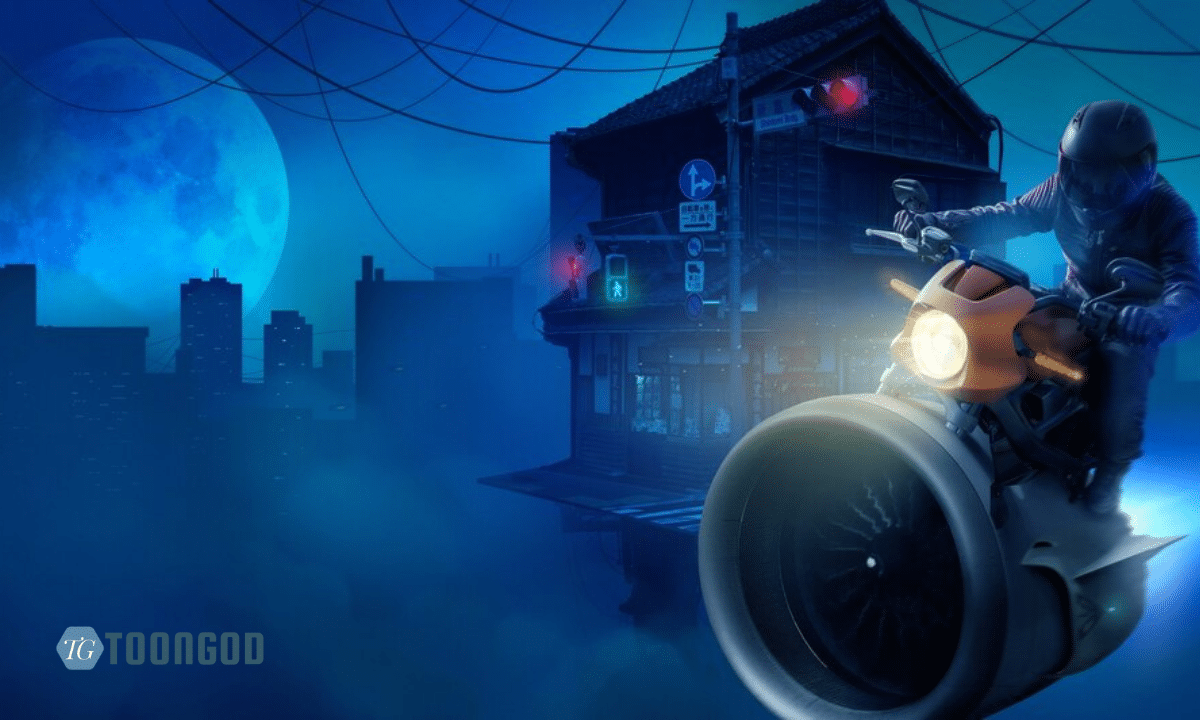Charging Animation – The Modern technology 2024

Charging Animation: In today’s digital landscape, animations play a crucial role in capturing user attention and enhancing the user experience. One of the most effective types of animation is charging animation. This dynamic visual element not only makes interfaces more engaging but also communicates vital information in a visually appealing way. At Toongod, we specialize in crafting stunning animations that elevate your digital presence. Let’s dive deeper into the world of charging animation and explore how it can transform your projects in both India and the US.
Understanding Charging Animation
Animation refers to the visual representation of a charging process, typically seen in mobile applications, websites, and electronic devices. This animation often involves icons, graphics, or illustrations that depict the flow of energy or the process of charging. Whether it’s a battery icon filling up or an electric pulse moving through a device, charging animations serve a crucial purpose—they provide users with feedback and enhance their overall experience.
The Importance of Charging Animation
- User Engagement: A well-designed animation captures users’ attention, making the experience more interactive. It can turn mundane tasks, like charging a device, into a visually interesting process.
- Visual Feedback: Charging animations offer immediate visual feedback, reassuring users that their actions are being processed. This can reduce anxiety and uncertainty, especially in mobile applications.
- Brand Identity: Custom animations can reinforce your brand’s identity. By incorporating your brand colors and style into these animations, you can create a cohesive user experience that aligns with your overall branding strategy.
- Improved User Experience: A thoughtfully designed charging animation contributes to a smoother user journey. It guides users through processes, ensuring they understand what’s happening at each stage.
- Increased Retention: Users are more likely to return to an application or website that offers a pleasant experience. Engaging charging animations can make your platform memorable, encouraging users to come back.
- Cultural Relevance: In diverse markets like India and the US, integrating culturally relevant design elements into charging animations can significantly enhance user connection and satisfaction. Tailoring your animations to reflect local culture, trends, and aesthetics can result in a deeper emotional engagement with your audience.
Applications of Charging Animation
Charging animation is versatile and can be applied in various industries. Here are some notable applications:
1. Mobile Applications
In mobile applications, animation enhances the user experience by visually indicating the charging process. When users connect their devices to a power source, animations like a battery icon filling up or a lightning bolt flashing can make the experience more engaging. This is particularly effective for apps focused on utilities or productivity, where users may frequently charge their devices.
2. E-Commerce Platforms
For e-commerce platforms, animations can be incorporated into the checkout process. As users complete their purchases, a charging animation can indicate that their order is being processed. This not only provides reassurance but also keeps users engaged during potentially lengthy transactions.
3. Websites and Portfolios
Websites and online portfolios can also benefit from charging animations. As users navigate through galleries or project pages, subtle animations can enhance the overall aesthetic and make the experience more enjoyable. A charging animation can be used to draw attention to new features or updates on your website.
4. Gaming Industry
In the gaming industry, animations can enhance the user experience during loading screens or while transitioning between levels. These animations can keep players engaged and entertained, reducing the perceived waiting time.
5. Internet of Things (IoT) Devices
With the rise of IoT devices, charging animations can provide users with important feedback about device status. Whether it’s a smart home device, wearable technology, or other connected gadgets, visually indicating charging status can enhance usability and user satisfaction.
The Role of Charging Animation in Modern Design
In modern design, the principles of usability and aesthetic appeal go hand in hand. As digital experiences evolve, charging animations have become an essential part of this equation. Here are a few areas where animation can be applied effectively:
1. Enhancing User Experience
The primary goal of any animation, including charging animations, is to enhance the user experience. By incorporating visually appealing animations, you can create an engaging and memorable experience for your users. For instance, a seamless transition during charging can make users feel in control and informed.
2. Storytelling
Charging animations can also be used as a storytelling tool. By crafting narratives around charging processes, you can engage users on an emotional level. For example, a charging animation that depicts a battery gradually powering up can symbolize progress and growth, resonating with users’ aspirations.
3. Reducing Frustration
Charging animations can help reduce user frustration during wait times. When users see a loading screen, they may feel anxious or impatient. By incorporating a well-designed animation, you can distract users from the wait and make the experience more enjoyable.
4. Encouraging Interaction
Charging animations can encourage users to interact with your application or website. For instance, an animated button that indicates charging can prompt users to click and explore further. This added layer of engagement can enhance user satisfaction and promote exploration.
How to Create Effective Charging Animation
Creating an effective charging animation involves several steps. Here’s a guide to help you design captivating animations that resonate with your audience:

1. Define the Purpose
Before diving into design, define the purpose of your animation. Is it meant to provide feedback, enhance user engagement, or reinforce brand identity? Understanding the purpose will guide your design choices.
2. Choose the Right Style
The style of your animation should align with your overall branding. Whether you opt for flat design, 3D graphics, or minimalist illustrations, ensure that the style reflects your brand’s personality. Consider using your brand colors to create a cohesive look.
3. Keep It Simple
While animations can be intricate, it’s essential to keep them simple and straightforward. Users should be able to understand the animation’s purpose at a glance. Avoid overly complex animations that could confuse or distract users.
4. Optimize Performance
Animations should enhance the user experience without hindering performance. Optimize your animations to ensure they load quickly and do not negatively impact your website or application’s speed. Consider using lightweight file formats like SVG for smooth animations.
5. Test and Iterate
Once your animation is designed, conduct user testing to gather feedback. Pay attention to how users respond to the animation and make adjustments as needed. Iterating on your design based on user feedback will help you create more effective animation.
Best Tools for Creating Charging Animation
Creating captivating charging animations requires the right tools. Here are some popular tools and software that can help you design and implement your animations effectively:
1. Adobe After Effects
Adobe After Effects is a powerful tool for creating complex animations. It offers a wide range of features, including motion graphics, 3D effects, and animation presets, making it suitable for designing charging animations.
2. Lottie
Lottie is an open-source animation file format that allows you to render animations in real time. By exporting your animations as Lottie files, you can ensure smooth playback across various platforms. This is particularly useful for mobile applications.
3. Figma
Figma is a collaborative design tool that enables teams to create and prototype animations. With its intuitive interface and animation features, Figma allows designers to experiment with different animation styles and transitions.
4. Principle
Principle is a design tool that focuses on creating interactive animations and prototypes. It’s an excellent choice for designers looking to bring their charging animations to life and test how they work within a user interface.
5. Blender
For 3D charging animations, Blender is a fantastic open-source software that allows designers to create stunning 3D visuals. Whether you’re looking to develop complex 3D models or simple animations, Blender offers a versatile platform for creativity.
6. SVG Animation Libraries
Using libraries like Snap.svg or GreenSock (GSAP) can help streamline the process of creating SVG-based animations. These libraries provide robust options for animating vector graphics, ensuring smooth and performant results.
Implementing Charging Animation on Your Platform
Once you’ve designed your charging animation, it’s time to implement it on your platform. Here’s how you can effectively integrate charging animations into your projects:
1. Front-End Development
If you’re developing a website or mobile application, ensure that your animation is seamlessly integrated into the front-end code. This involves adding the animation files and coding the necessary triggers for the animation to play at the right moments.
2. Utilize CSS Animations
For simple charging animations, CSS animations can be a great option. They allow for smooth transitions without the need for extensive JavaScript coding. Use CSS keyframes to define your animation sequence and apply it to the relevant elements.
3. JavaScript Libraries
For more complex animations, consider using JavaScript libraries like GSAP or Anime.js. These libraries provide advanced animation features and allow for greater control over timing, sequencing, and interactivity.
4. Monitor Performance
After implementing your charging animation, monitor its performance across different devices and browsers. Ensure that the animation works smoothly and does not negatively impact user experience. Regularly test for compatibility and responsiveness.
5. Optimize for Mobile Devices
Given the prevalence of mobile devices, it’s crucial to optimize your animations for smaller screens. Ensure that your charging animations are responsive and adjust appropriately to different screen sizes.
6. Accessibility Considerations
While animations can enhance user experience, they should also be accessible to all users. Consider providing options to disable animations for users who may experience motion sensitivity. Additionally, use descriptive labels or tooltips for icons to assist users with disabilities.
Real-World Examples of Charging Animation
To better understand the impact of charging animation, let’s explore some real-world examples of how companies have successfully integrated this feature into their digital products.
1. Apple’s Battery Indicator
Apple’s battery indicator is a prime example of effective charging animation. When users connect their devices, the battery icon animates to show the charging process visually. This simple yet effective animation reassures users that their device is receiving power.
2. Google Play Store
The Google Play Store uses charging animations during app installations and updates. As users download apps, a visual representation of progress is displayed, enhancing the overall user experience and keeping users informed.
3. Spotify’s Loading Screen
Spotify incorporates charging animations during transitions between songs and playlists. These animations keep users engaged and provide a seamless listening experience, reinforcing the platform’s brand identity.
4. Tesla’s Charging Stations
Tesla’s charging stations utilize animated screens that display charging progress in real time. This engaging visual feedback enhances the overall charging experience for users, making it more enjoyable and informative.
5. Video Game Loading Screens
Many video games employ charging animations during loading screens. These animations keep players entertained while waiting and can include fun graphics or character animations that fit the game’s theme.
Cultural Considerations in Charging Animation
In diverse markets like India and the US, understanding cultural nuances is essential when designing charging animations. Here are some factors to consider:
1. Symbolism
Different cultures may interpret symbols differently. For instance, while a lightning bolt may represent energy in one culture, it could have negative connotations in another. Ensure that your animations align with the cultural understanding of your target audience.
2. Color Associations
Colors evoke different emotions and meanings across cultures. In India, red can symbolize good fortune and joy, while in the US, it may be associated with caution or danger. Tailoring your charging animation’s color palette to resonate with local audiences can enhance engagement.
3. Localization
When targeting a global audience, consider localizing your animations to reflect regional preferences. This may involve adapting graphics, text, and even animation styles to cater to the specific tastes of different cultures.
4. User Testing
Conduct user testing with diverse groups to gather feedback on your charging animations. Understanding how different audiences perceive and interact with your designs can provide valuable insights for improvement.
The Future of Charging Animation
As technology continues to evolve, so does the role of charging animation in user interfaces. Here are some trends and predictions for the future:
1. Increased Use of Micro-Interactions
Micro-interactions are small, subtle animations that enhance user experiences. Charging animations will likely become more integrated with these micro-interactions, providing users with instant feedback and guidance throughout their journey.
2. Personalized Experiences
With advancements in AI and machine learning, charging animations may become more personalized. Imagine charging animations that adapt based on user preferences, behavior, or even the time of day, creating a more tailored experience.
3. Enhanced 3D Graphics
As 3D graphics technology continues to advance, we can expect to see more intricate and visually stunning charging animations. This trend will enable designers to create immersive experiences that captivate users.
4. Integration with Augmented Reality (AR)
The rise of AR technology opens up new possibilities for charging animations. Imagine interacting with charging processes in a virtual space, providing users with a unique and engaging experience.
5. Sustainable Design
As awareness of environmental issues grows, the design industry will increasingly focus on sustainability. Charging animations that highlight energy efficiency or eco-friendly practices could resonate well with environmentally-conscious users.
Conclusion: Enhance Your Digital Presence with Toongod
In conclusion, charging animation is a powerful tool for enhancing user experience and engagement in the digital world. By incorporating thoughtful animations into your projects, you can create a more interactive and visually appealing experience for users. At Toongod, we specialize in creating stunning animations tailored to your brand’s needs.
Whether you’re in India or the US, our team is here to help you elevate your digital presence through innovative designs. For more information about our services, visit our About Us page, and feel free to reach out through our Contact Us page. Let us bring your ideas to life with captivating animations that resonate with your audience!
Additionally, explore our insights on animation images and visual storytelling to see how we can bring your ideas to life with captivating animations that resonate with your audience!





